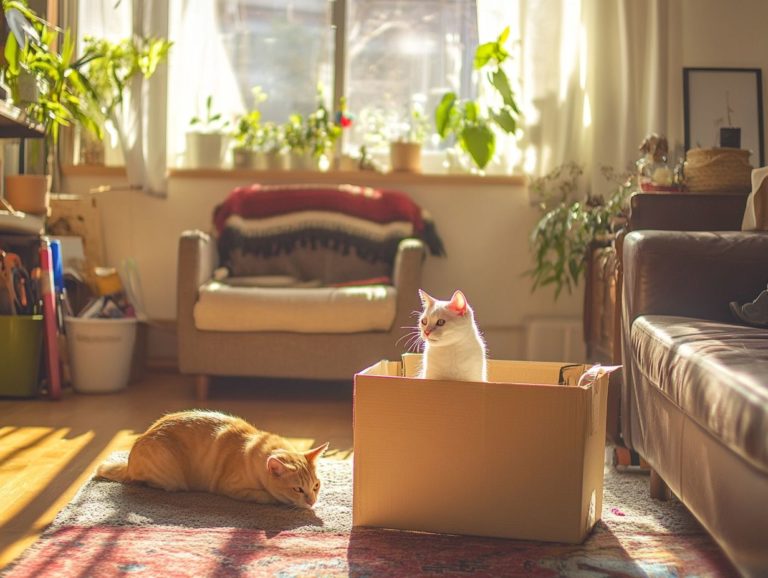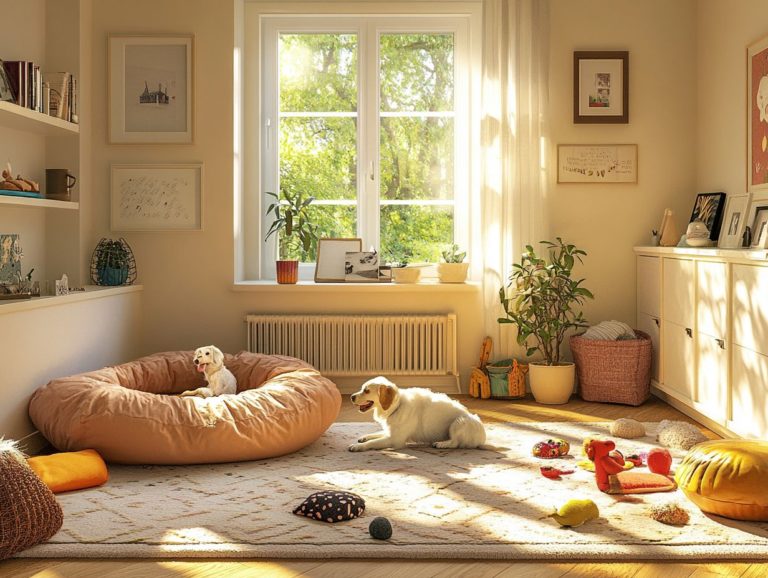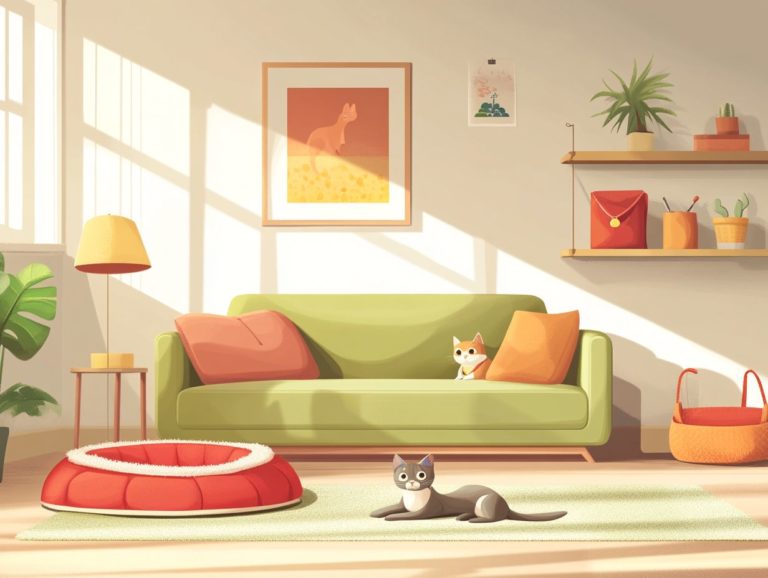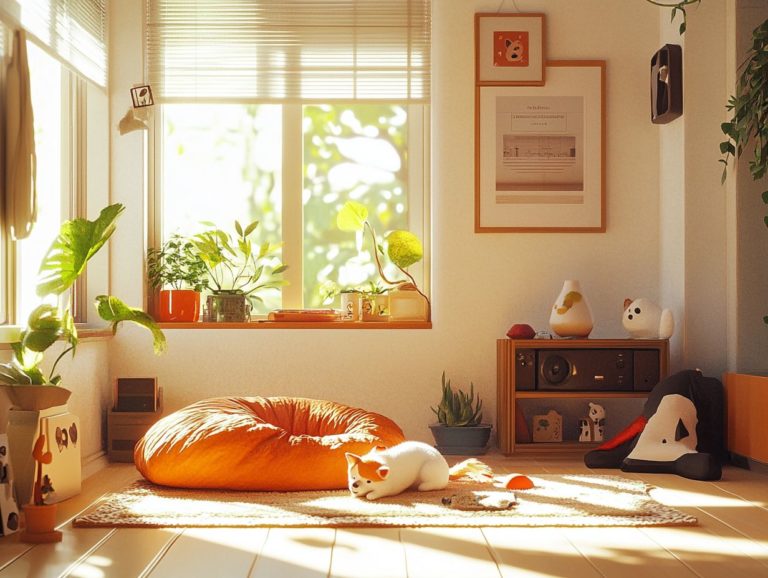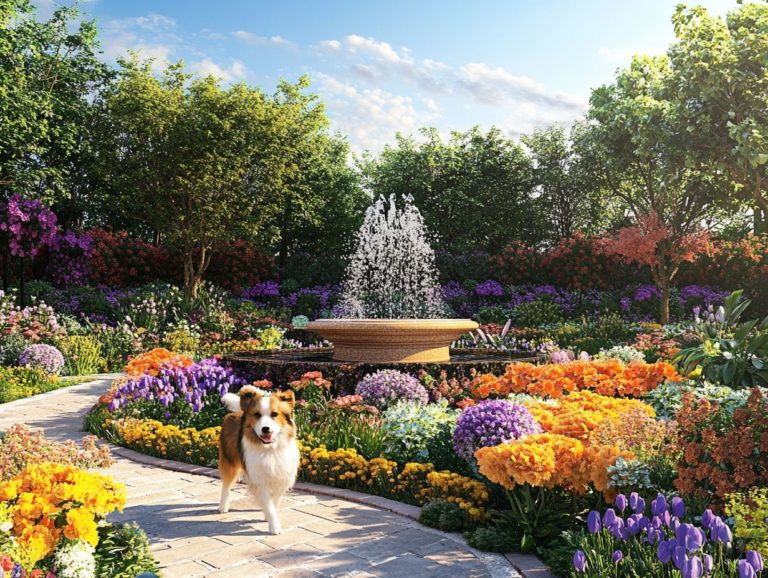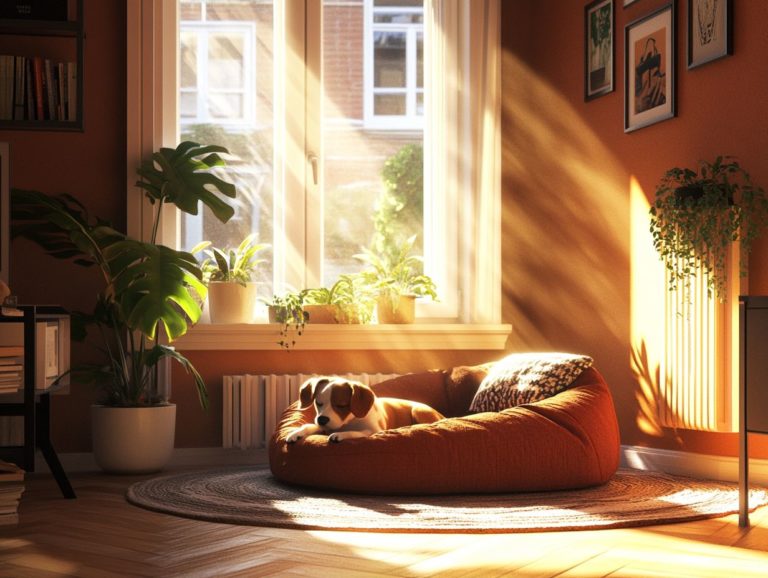5 Ways to Make Your Yard Safe for Pets
Creating a pet-friendly yard is key for your pet’s safety and well-being. By securing your fence and removing toxic plants, you can easily turn your outdoor space into a safe haven.
You ll explore five key ways to protect your pets, delve into common hazards, and discover tips for selecting pet-safe plants. By the end, you’ll have all the tools necessary to craft a secure and enjoyable environment for your beloved companions.
Contents
- Key Takeaways:
- 1. Secure Your Fence
- 2. Remove Toxic Plants
- 3. Avoid Using Chemicals on Your Lawn
- 4. Provide Shaded Areas for Your Pet
- 5. Keep Your Yard Free of Debris
- How to Create a Pet-Friendly Yard?
- What Are the Most Common Hazards in a Yard for Pets?
- How Can You Train Your Pet to Stay Safe in the Yard?
- What Are Some Tips for Choosing Pet-Safe Plants for Your Yard?
- How Often Should You Inspect Your Yard for Potential Hazards?
- What Are Some Additional Safety Measures to Consider for Your Pet in the Yard?
- Frequently Asked Questions
- What are the top 5 ways to make my yard safe for my pets?
- How can I prevent my pets from digging in the yard?
- What are some common outdoor hazards for pets?
- Can I use insect repellents in my yard if I have pets?
- How can I make my yard more enjoyable for my pets?
- What should I do if my pet ingests something toxic in the yard?
Key Takeaways:
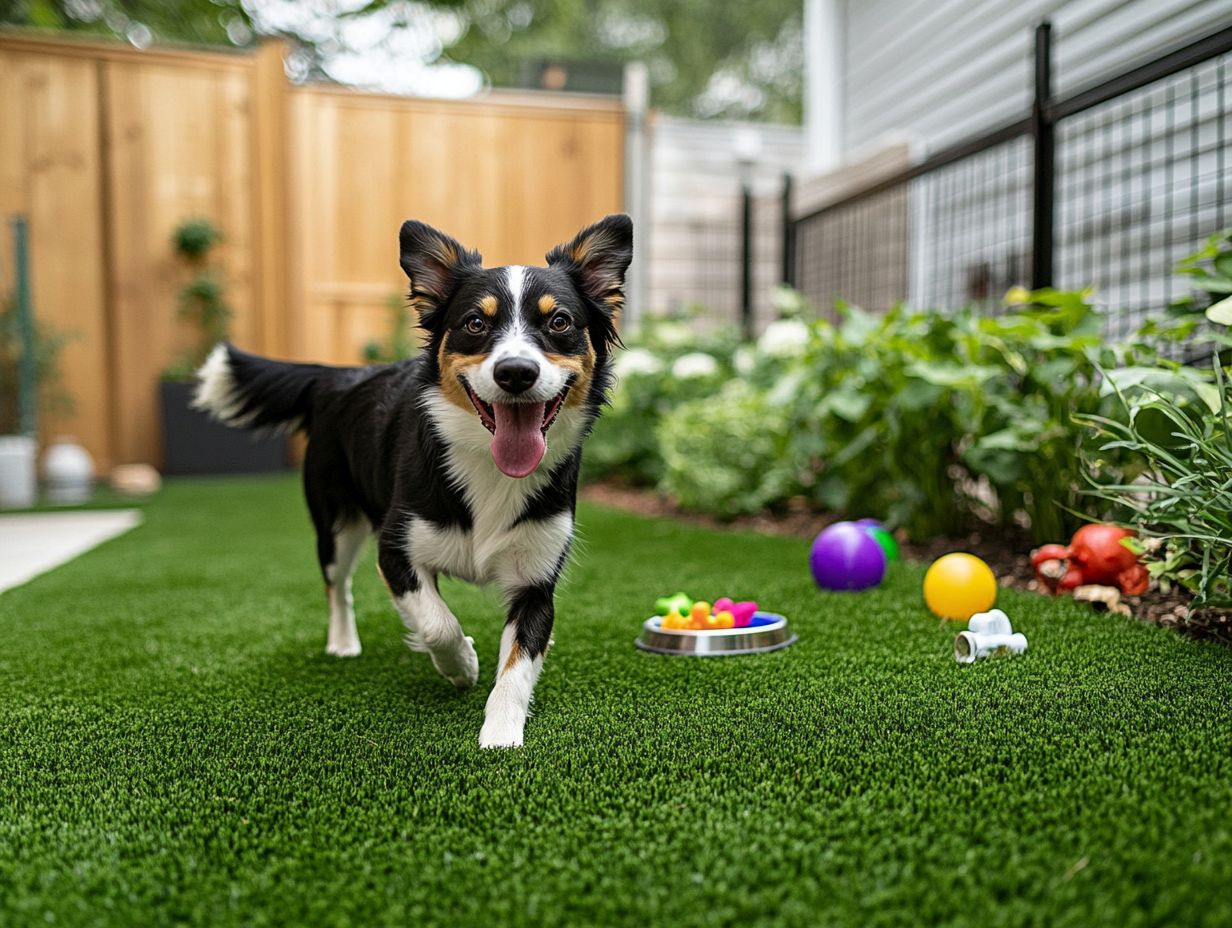
- Secure your fence to prevent your pet from escaping and keep out potential dangers.
- Remove toxic plants to keep your pet safe from ingestion or contact.
- Avoid chemicals on your lawn to prevent harm to your pet.
1. Secure Your Fence
Securing your fence is essential for creating a safe outdoor haven for your dog. This allows them to explore freely while keeping them protected from potential dangers. A well-maintained fence not only safeguards your pet but also protects your organic lawn from unwanted visitors.
Regular checks for gaps should be on your home maintenance to-do list. This ensures a secure environment for your furry friend.
Assess your fence s integrity by looking for weak spots, rot, or broken panels. Addressing any gaps makes a world of difference in your pet s safety and the overall health of your yard.
A sturdy fence serves as a reliable barrier. This enables you to create a safe haven where your lawn flourishes, and your beloved companion enjoys the great outdoors.
2. Remove Toxic Plants
Removing toxic plants is crucial for creating a safe and healthy environment for your dog. Many common species can pose serious health risks if ingested, and you certainly want to avoid that.
By staying informed, you can take proactive measures to cultivate a nurturing space for your furry friend. The consequences of exposure to toxic flora can range from mild gastrointestinal distress to severe health complications situations no pet owner wishes to face.
Replace hazardous plants with varieties that are safe for dogs and visually appealing. Options like lavender, spider plants, and Boston ferns enhance your yard’s aesthetics while fostering a dog-friendly environment.
Making these changes will not only keep your pets safe but also give your yard a stunning upgrade!
3. Avoid Using Chemicals on Your Lawn
Avoiding chemicals on your lawn is key for organic lawn care. This ensures both your grassy areas and your beloved pet remain safe from harmful substances found in many traditional weed killers and pest control methods.
Choosing organic products cultivates a healthy lawn environment that encourages robust grass growth without compromising your dog s well-being. This natural approach is effective and contributes to a more sustainable ecosystem around your home.
Chemical treatments can be harmful not just to pets who might roam through treated areas, but also to local wildlife and soil health. Many conventional chemicals can poison small mammals and birds, disrupt the delicate balance in the soil, and contaminate nearby water sources.
Explore alternatives like organic fertilizers made from natural ingredients or using natural pest control methods. Implementing practices like regular aeration, overseeding, and composting significantly enhances your lawn’s appearance while creating a safe haven for your furry companions.
Start today to create a safer space for your pets!
4. Provide Shaded Areas for Your Pet
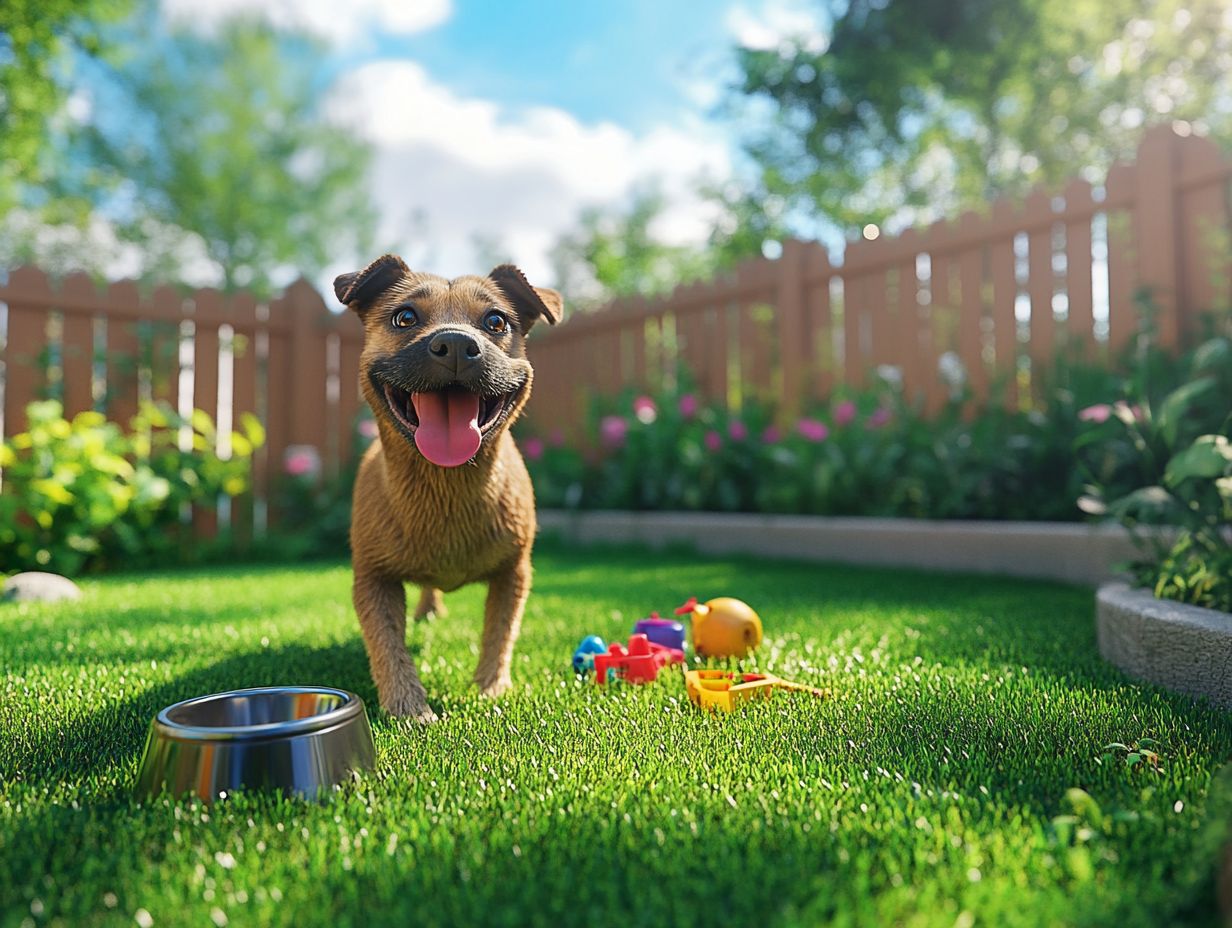
Providing shaded areas in your yard is essential for keeping your dog comfortable, especially during those sweltering summer days. It gives them a safe haven to relax away from the relentless sun.
By creating shaded spots with trees, umbrellas, or other structures, you enhance your lawn’s design. This also helps to prevent overheating and dehydration.
This simple step can make a huge difference in your pet s comfort and happiness as they enjoy their outdoor adventures.
Beyond the immediate benefits of shade, you can also incorporate landscaping options like strategically placed flower beds or tall shrubs. These can serve as natural shields against harsh sunlight.
Structures such as pergolas or gazebos not only look nice but can also be adorned with climbing plants, creating a cooler area where your pets can relax.
Ensuring your dog has easy access to these shaded areas encourages them to stay hydrated. A well-shaded yard isn’t just a visual treat; it s a crucial refuge for your furry companion, protecting them from the potential dangers of excessive heat.
5. Keep Your Yard Free of Debris
Keeping your yard free of debris is crucial for maintaining a healthy lawn and providing a safe environment for your dog. Clutter can conceal potential hazards, making it imperative to ensure your pet’s safety.
Be particularly vigilant about items like broken glass, sharp metal, or discarded wires that could cause injury. As a pet owner, you should also be wary of toxic plants, such as azaleas and oleanders, which can easily hide beneath piles of leaves.
Regular yard maintenance not only minimizes these risks but also allows sunlight and air to circulate properly, helping the grass grow strong. This proactive approach cultivates a healthier environment for your pets and grants you peace of mind, letting them revel in their outdoor space without a care.
How to Create a Pet-Friendly Yard?
Creating a pet-friendly yard is all about making thoughtful landscaping choices, implementing safety measures, and committing to regular maintenance. This way, both your dog and your lawn can thrive together in a space designed for fun and safety.
By integrating pet-safe plants, installing a secure fence, and choosing organic lawn care methods, you can cultivate an environment that not only meets your pet’s needs but also enhances the overall beauty of your property. For additional tips, consider exploring ways to organize your home for anxious pets.
Establishing designated potty areas and providing ample shade can significantly elevate the outdoor experience for both you and your furry friend. Selecting flowers like marigolds, sunflowers, or snapdragons safe for dogs adds vibrant colors without risking their health.
Incorporating features such as non-toxic mulch and pathways made from natural materials enhances safety while allowing your pets to roam freely.
Adopting an organic lawn care approach protects your pets from harmful chemicals and fosters a lush, pesticide-free area where wildlife can thrive, contributing to a balanced ecosystem. By thoughtfully considering these elements, you can create an inviting and secure outdoor haven that encourages playful exploration while ensuring the well-being of your four-legged companions.
What Are the Most Common Hazards in a Yard for Pets?
The most common hazards in your yard for pets include toxic plants, sharp objects, and chemicals often lurking in lawn care products. All of these can pose significant risks to your dog s health and safety.
As a pet owner, stay vigilant in identifying dangers. Take proactive steps to ensure your outdoor space is free from hazards that could cause injuries or illnesses.
Awareness and preventive measures are key to creating a dog-safe yard where your pets can play and explore without worry.
Be mindful of environmental risks like stagnant water, which can harbor harmful bacteria. Sharp tools and debris can lead to cuts and injuries, so keeping an eye out for these is crucial.
Simple strategies like conducting regular yard inspections can help you catch potential threats before they escalate into issues.
Choosing pet-safe lawn care solutions and securely storing harmful chemicals can significantly reduce risks. Maintain a clean, well-secured outdoor area to enhance the safety and well-being of your furry companions.
How Can You Train Your Pet to Stay Safe in the Yard?
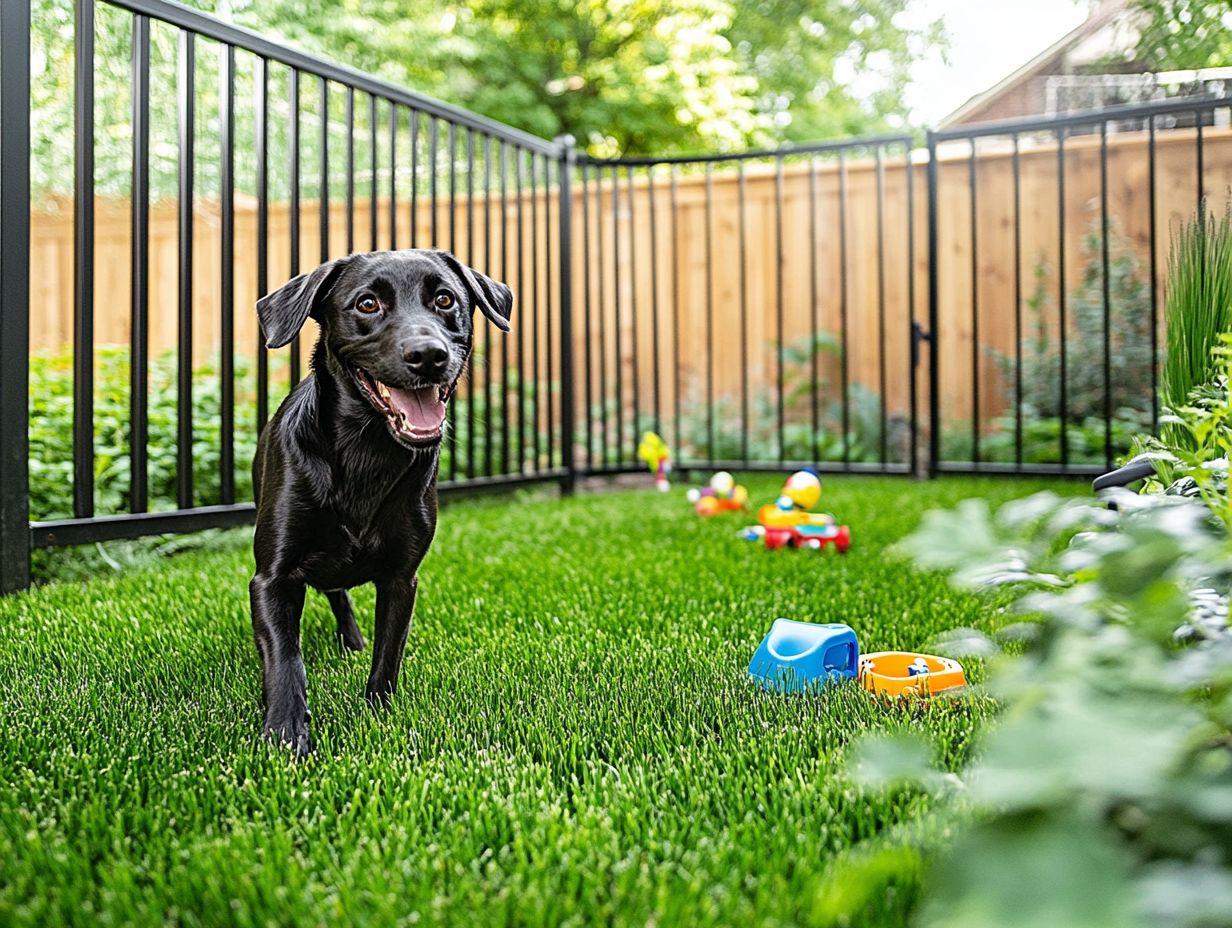
Training your pet to stay safe in the yard means teaching them boundaries and reinforcing commands. Ensure they understand which areas are off-limits to avoid hazards or escape attempts.
By rewarding good behavior, you can guide your dog to respect designated potty spots and steer clear of toxic plants or fence gaps that could lead to trouble.
Remember, training is a continuous journey that enhances your pet s safety. It allows for a more enjoyable and worry-free outdoor experience.
Establish clear, consistent commands like ‘stay’ or ‘leave it’. When your pet nears a dangerous area, promptly redirect them with a firm ‘no’ followed by an alternative command. This encourages them to link boundary respect with positive outcomes.
Keep a close eye on your pet as they explore their yard adventure! This not only ensures their immediate safety but also provides opportunities to practice these commands.
Over time, consistently reinforcing limits builds your pet s confidence and cultivates a trusting relationship, making them more responsive to your cues.
What Are Some Tips for Choosing Pet-Safe Plants for Your Yard?
When selecting plants for your yard, choose varieties that are safe for your pet. This ensures a secure environment while enhancing the aesthetic appeal of your lawn.
As a pet owner, prioritize non-toxic plants and consider their growth habits, maintenance requirements, and how well they fit into your local ecosystem.
By embracing organic lawn care methods and incorporating pet-friendly flora, you can cultivate a vibrant outdoor space that both you and your dog will cherish.
For example, consider plants like lavender, which offers a delightful fragrance and helps keep pests at bay, or spider plants, revered for their air-purifying abilities. Integrating these options into your landscape design can create a visually stunning environment while promoting your pet’s health.
Designate areas for these plants and keep harmful varieties at a safe distance to maintain a healthy balance.
Additionally, mulching covering the soil with materials like leaves or wood chips can help retain soil moisture and keep your landscape looking lush. This ensures a playful and stress-free environment for your furry companion.
How Often Should You Inspect Your Yard for Potential Hazards?
Check your yard often for hazards to maintain a safe environment for your dog. New risks can arise that you might not notice.
These inspections help you identify and address concerns before they affect your dog’s well-being. Consider assessing outdoor structures, ensuring no sharp objects or harmful chemicals are lying around, and confirming that all gates and fences are secure.
It s also important to look for signs of pests like ticks or fleas. Check for areas where your dog might dig or try to escape.
Creating a handy checklist for your inspections can be very helpful. Here are a few items to include:
- Examine plants for toxicity
- Ensure the yard is free from litter
- Check for any standing water that could attract mosquitoes
By adopting this systematic approach, you’ll provide peace of mind and a safe play area for your beloved companion.
What Are Some Additional Safety Measures to Consider for Your Pet in the Yard?
In addition to selecting the right fencing and plants, consider other safety measures for your yard. Think about installing a designated potty area, ensuring ample shade, and keeping the lawn clear of debris. These practices are essential for creating a secure environment.
Regular yard maintenance is important, including watering after applying organic lawn care treatments. This prevents unsightly brown spots and keeps your outdoor space looking nice for both you and your pet.
It s vital to keep an eye out for pests like fleas and ticks, which can pose health risks to your furry friends. Regular checks and treatments are crucial, as pest problems can lead to discomfort and serious medical issues.
Creating a secure area free of sharp objects and toxic plants ensures your pets can explore without worry. Ongoing maintenance not only improves your yard’s quality but also enhances your pets’ overall well-being, making outdoor playtime safe and enjoyable.
Frequently Asked Questions
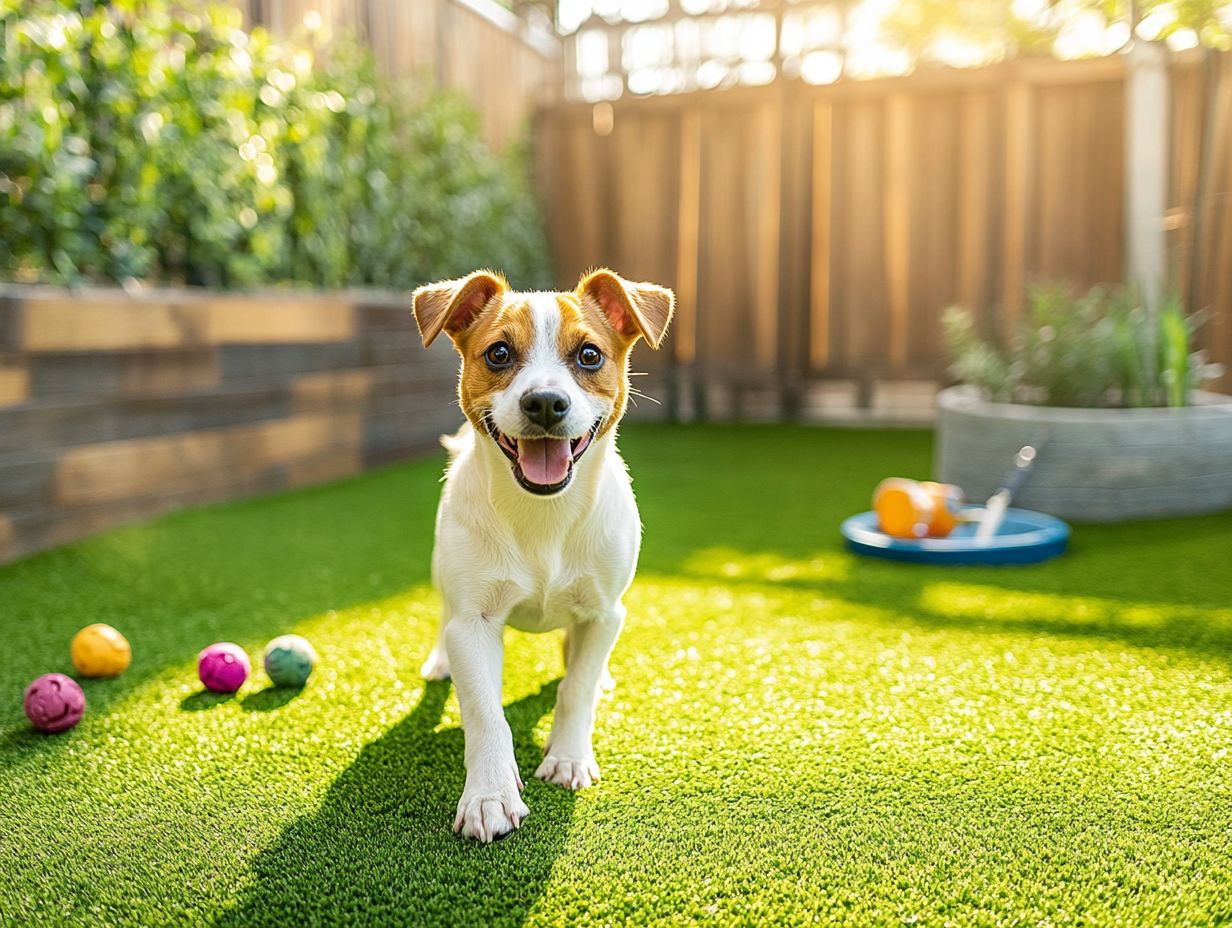
What are the top 5 ways to make my yard safe for my pets?
- Secure your yard with a fence or barrier to prevent your pets from escaping.
- Remove any toxic plants or substances from your yard.
- Install a pet-friendly outdoor shelter or shade for your pets to stay cool and protected.
- Keep your lawn and garden free of pesticides and fertilizers.
- Regularly check and secure any potential hazards, such as loose wires or sharp objects.
How can I prevent my pets from digging in the yard?
Provide designated digging spots for your pets and train them to use those areas. You can also deter them by placing rocks or chicken wire in areas where they like to dig.
What are some common outdoor hazards for pets?
Common outdoor hazards include toxic plants, chemicals, sharp objects, and potential escape routes. Regularly inspect your yard for these hazards and take precautions to keep your pets safe.
Can I use insect repellents in my yard if I have pets?
Avoid using insect repellents in areas where your pets have access. If necessary, choose pet-friendly and natural options, and always keep your pets away from treated areas until they are completely dry.
How can I make my yard more enjoyable for my pets?
Add pet-friendly features, such as a designated play area, a dog pool, or interactive toys. You can also plant pet-friendly herbs and plants for them to enjoy.
What should I do if my pet ingests something toxic in the yard?
Immediately contact your veterinarian or a pet poison hotline. Keep a list of toxic plants and substances handy, and regularly check for potential hazards in your yard to prevent such incidents.
Keep your furry friends safe by inspecting your yard today for safety!

